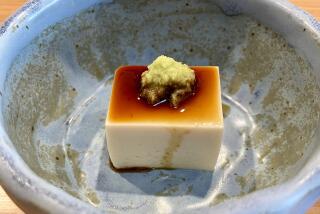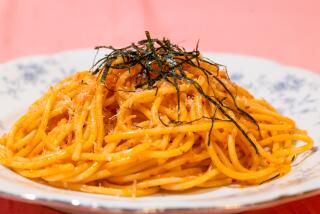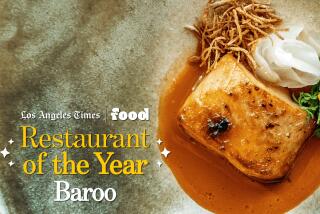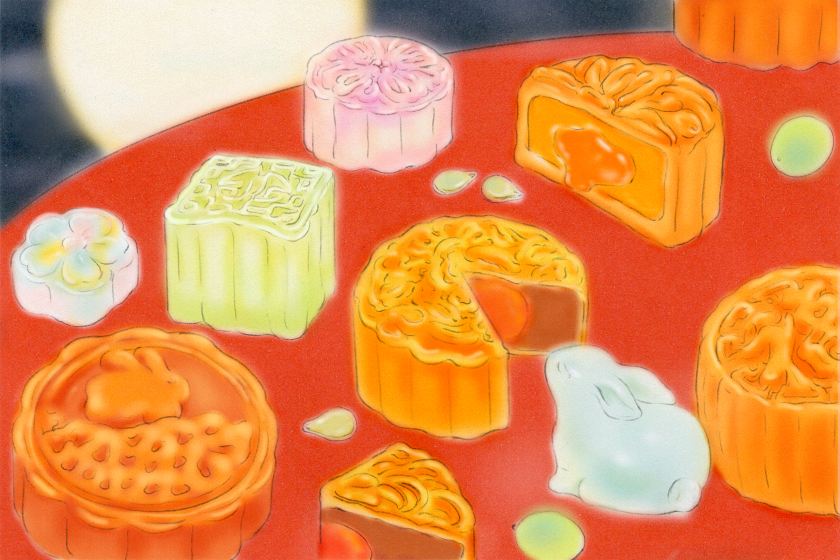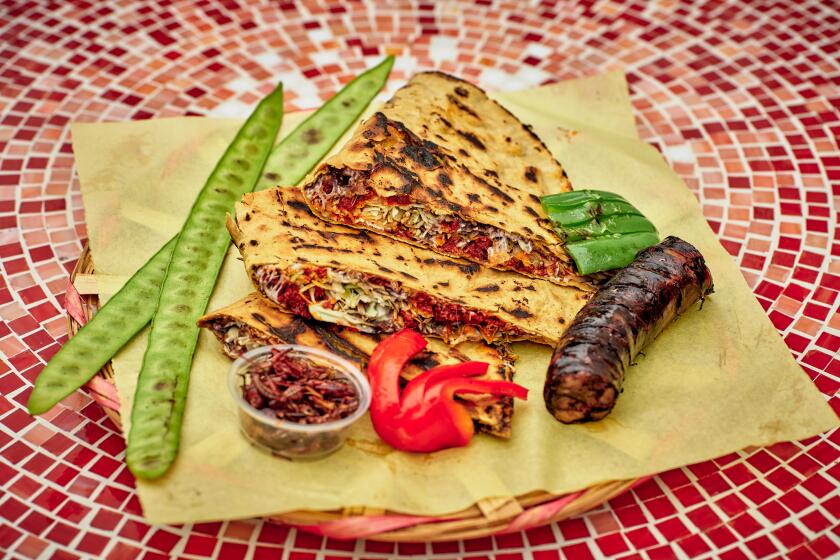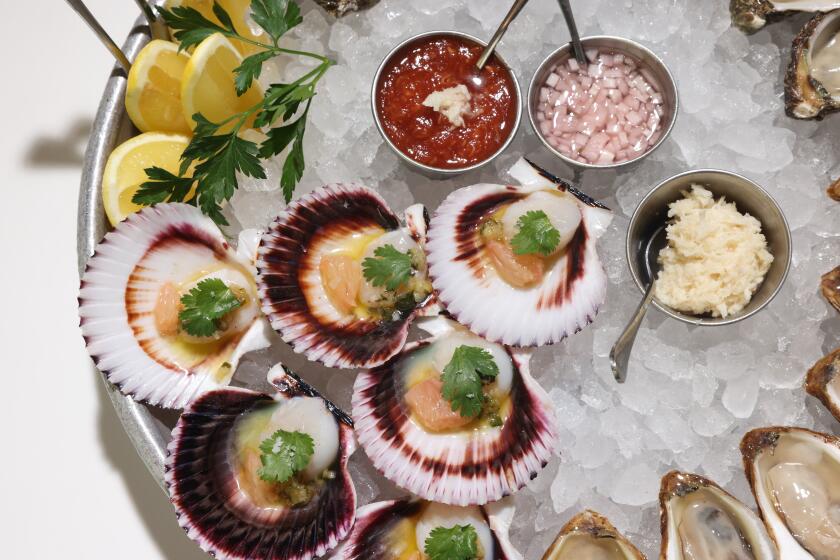Bringing in the new year with soba is a Japanese tradition

When I go back to Japan, some people assume that I head straight for sushi bars. But my favorite pastime is making pilgrimages to artisanal soba shops. If there is one food I love with a passion, it is soba, the thin, earthy-looking buckwheat noodles. I enjoy their natural sweet flavor and nutty aroma and eat them for lunch three or four times a week, and sometimes for dinner too.
I’m not the only one who places soba on such a high pedestal. “Soba is the best Japanese food there is,” my friend Noritoshi Kanai said to me the other day. An active 86 years, he has a breakfast ritual that consists of a bowl of soba seven days a week, surpassing even my soba consumption.
Kanai likes soba because it makes him feel soboku -- a quality Japanese people treasure that means to be simple, natural, modest and elegant in an unadorned way. Considering this is the Japanese American businessman who brought the first sushi bar to the U.S., it’s amazing what soba can do to keep one’s ego in check.
Then comes the year’s end, when the number of soba enthusiasts multiplies. Japanese people practice an old custom on New Year’s Eve called toshikoshi soba, eating “Passing of the Year” soba to bring good luck and good fortune. The shape and length of soba are associated with a lean and long life.
Keep it simple
But soba is by no means an haute, complicated or new-wave noodle. Pure and simple, it’s never masked with heavy, oily sauces. Instead it’s usually eaten cold and plain with a dipping sauce or hot in a soy-based broth.
You can, however, pair soba with a variety of side dishes.
One classic accompaniment is tamago. You have probably eaten tamago at a sushi bar. It is an egg omelet that is made by rolling together several layers of cooked egg. It’s seasoned with soy sauce, sugar and dashi, a fragrant broth made with dried bonito flakes and konbu (seaweed).
By adding dashi to the eggs, you get a juicy and savory omelet that is lighter in texture and flavor than its butter-based Western counterpart.
Some tamago can be sweet like a dessert custard. I hold off on the sugar and make a milder version. The tamago you see at sushi bars is usually rectangular or square because it is made in a special pan. I use a standard round pan to make mine. Not everything has to be square.
Kanai likes his morning soba with satsuma-age, or deep-fried fish balls, and a handful of fresh bean sprouts. It’s a good combination of protein and vitamins to balance out the meal.
Satsuma-age is kind of like a sausage ball, except that it is made with minced fish and vegetables.
Satsuma-age originated in Kagoshima on the southern tip of the island of Kyushu where there is an abundance of fish. The people there call these deep-fried fish balls “tempura.” But unlike the standard tempura, satsuma-age are not coated in a batter, so they’re lighter.
Eat satsuma-age just out of the oil while they are hot and crispy. If you have any fear of deep-frying, like I once did, this is a good entry-level tempura to practice with.
They are also tasty at room temperature. You can grill them on the barbecue or put them in hearty nabe (stews). Satsuma-age is a good standby dish to have on hand because it freezes well.
Soba should be served immediately. The noodles will lose their al dente texture if you let them sit around too long.
When serving tamago or satsuma-age with soba, make the side dishes first and have plenty of grated daikon to serve as a condiment. Then boil the soba noodles, which takes one to five minutes, depending on the thickness of the soba and on whether you are using fresh or dried noodles.
Put all three of these dishes together and you have a nice spread for your New Year’s Eve table. So before you finish up the year, how about joining me and millions of others in a big slurp of soba? Then pop open the Champagne and revel in the new year.
More to Read
Eat your way across L.A.
Get our weekly Tasting Notes newsletter for reviews, news and more.
You may occasionally receive promotional content from the Los Angeles Times.
